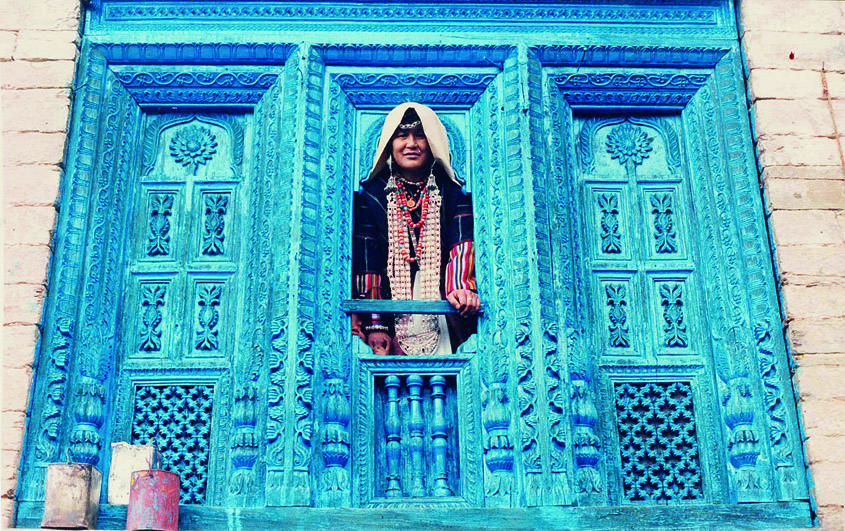In the Shadow of the Devi Kumaon: Of A Land, A People, A Craft
By Manju Kak
Publisher: Niyogi Books
Pages: 255
Price: Rs 1995
Manju Kak’s search for a narrative hidden in the Kumaon Hills began way before 9 November 2000—the day on which Uttrakhand was declared the 27th state of India. Kak realised that despite having grown up in the Kumaon region of Uttrakhand, she hardly “knew” the place. This understanding led her to discover the elements which continue to shape the landscape here, and have done so for time immemorial. And all her discoveries are well-documented in her latest book, which, apart from being expertly written, comes equipped with a series of rich and stunning images. Kak is the author of the text, and the photographs in the book are by Anup Sah and Vaibhav Kaul among others.
According to Kak, Nanda Devi—the tallest peak on the Indian side of the central Himalayan range—is the defining motif for the Kumaon Hills. (The world’s tallest, of course, is Mount Everest, which lies across the border, in Nepal.) The majestic Nanda Devi is named after one of the incarnations of goddess Parvati, and inspires folk legends, fairs and festivals in the region all year round. Given its influence on the lives of many, every 12th year, a pilgrimage called the Raj Rath Yatra is organised from a village in Garhwal to the base of the splendid mountain.

This book provides interesting details of the unique trek. What were the factors that led to the name “Kumaon”? Which were the prominent dynasties and rulers that added to the culture of the region? How much of the land saw the presence of colonial intervention here? Who were the people who brought multilayered infrastructure to this area? These are some of the questions answered in this descriptive and detailed book.
This comprehensive book is actually about exploring the character of a whole region, by involving the social as well as the political realities of this place.
In the chapter “Pahad and Pahadis”, Kak offers a sense of how it feels to navigate through this mountainous range. She also gives you a sense of the landscape, and of the local varieties of flora. As she writes: “Ascending the hills of Kumaon, one comes across sal (Shorea Robusta), sheesham (Dalbergia Sissoo), deodar (Cedras Deodara), the Himalayan cypress, rhododendron and a variety of barks. In the highest region are found birches (bhojpatra) and above this range are the fine grassy prairies, which burgeon during the summer and lie hidden under snow in winter. These are frequented by the Bhotia and Gaddi tribal graziers.”
Wood carving has remained a significant craft in this region. Kak notices that despite the hard work of the local artisans, and their ability to create intricate designs on wood, they are not respected as much today as they were in the 19th century. They are, she writes, part of a dying tradition. Still, the resilience of the community keeps it afloat. The artisans continue to work and create new designs.

The writer observes that the traditional design styles seen on various buildings here are derived from the Indian, Islamic and colonial influences, but due to the onslaught of “modern methods of construction” there is a little left of the once flourishing architectural heritage.
This comprehensive book is actually about exploring the character of a whole region, by involving the social as well as the political realities of this place. “The narrative of the women of Kumaon is the narrative of a peoples’ movement that sprang from those issues of fuel, fodder and alcoholism that directly affected them, and led to the birth of a new state,” writes Kak in the chapter “A Feminist Idiom”. This segment familiarises the reader with the many endeavours these women undertook to empower and emancipate themselves.

The pahadis bear witness to the strong presence of the Gods and of the ghosts, paying respects to both in the same way. The belief that “evil souls” brings about order in the villages, creates a sense of relief among the people here, who in this way are better able to cope up with the “undependable world, accept the natural hazards their lives are prone to and the afflictions that they cannot deal with”.
This well-researched book showcases the history as well as the present of this region, making it an essential read.

